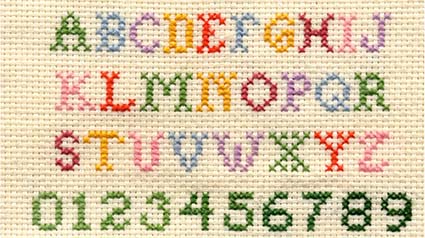
When you close your eyes and think about needle-based crafts—cross-stitch, needlepoint, embroidery, quilts—what’s the first thing that comes to mind? Perhaps it’s one of those patterned, yellow-stained, itchy pillows that your grandmother had scattered throughout her house. Or maybe the image runs deeper, informed by ancestral practices like the quilt making at Gee’s Bend, the small Alabama town famous for a sewing heritage that stems from surviving slavery.
As the grandmillenial aesthetic has taken hold in many of our homes (think decorative ashtrays, mixed floral wallpaper, and antique tea sets erected as living room art), so too has its cloth counterpart. Cross-stitching, a type of sewing, gridded embroidery, or decorative needlework that uses X-shaped stitches to fulfill a patterned stencil, is officially entering a new and improved iteration—one that both subverts traditional patterns and accounts for those who have historically been excluded from the trade. “The misconception is that [cross-stitching] is an all-white artform,” explains Lisa Woolfork, creator of the sewing group Black Women Stitch. Lisa didn’t want her love for what she described as a “a beautifully structured craft practice” to be hindered by the “filters often required of Black people in majority-white spaces”—a sentiment she shares with so many other Black cross-stitchers.
“I was exploring pages [of patterns] when I first started and thought, ‘Gosh, this stuff is just so white,’” says Miasia Osbey of her introduction to cross-stitch. “I remember seeing this elaborate piece of patriotic motifs and knowing I could never stitch that flag, because it’s stained with my ancestors’ blood.”
Read the full story at Architectural Digest.



